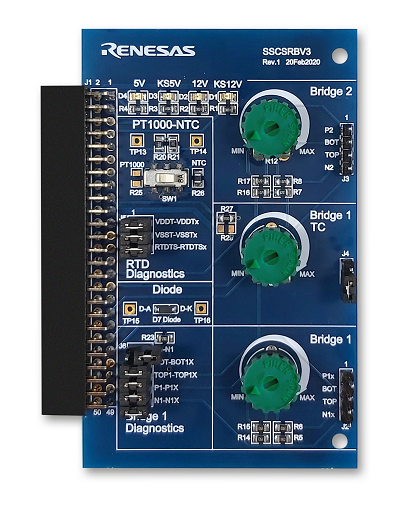Overview
Description
The ZSSC4132 Evaluation Kit provides the hardware needed for the configuration, calibration, and evaluation of the ZSSC4132 sensor signal conditioner (SSC) IC. The user's PC can communicate with the ZSSC4132 IC socketed on the ZSSC4132 evaluation board via the SSC communication board through a USB connection. The evaluation kit software is available online for free download. The evaluation board can connect to the user's sensor or to the SSC sensor replacement board (SRB). The SRB provides a replacement for an actual sensor and can be used for the first step of calibration or a dry-run calibration. The kit also includes a ZSSC4132 sample board and five VFQFPN samples.
Features
- USB 2.0 compatible "Plug & Play" connection between the user's computer and evaluation kit board for communication
- Communication interface enables configuration, calibration, and performance evaluation
- Powered by USB port or an external power supply (8V to 16V)
- Internal generated 12VDC and 5VDC supply
- Providing LIN (v1.3 and v2.x) and I²C communication to IC
- Sensor replacement board for quick and easy first IC feature evaluation
Applications
Documentation
|
|
|
|
|---|---|---|
| Type | Title | Date |
| Manual - Hardware | PDF 3.71 MB | |
1 item
|
||
Design & Development
Product Options
Applied Filters:
Videos & Training
A brief introduction and overview of IDT's (acquire by Renesas) sensor signal conditioner evaluation kits. Evaluation kits generally consist of three parts: a communication interface board, a device board, and a sensor simulator board - all connected together. A sophisticated software GUI accompanies the kit, enabling an engineer to learn how to use the part rapidly, do quick prototyping, and practice calibrations.
Presented by David Grice, applications engineer at IDT. For more information about IDT's sensor signal conditioner products, visit the Sensor Signal Conditioner page.



